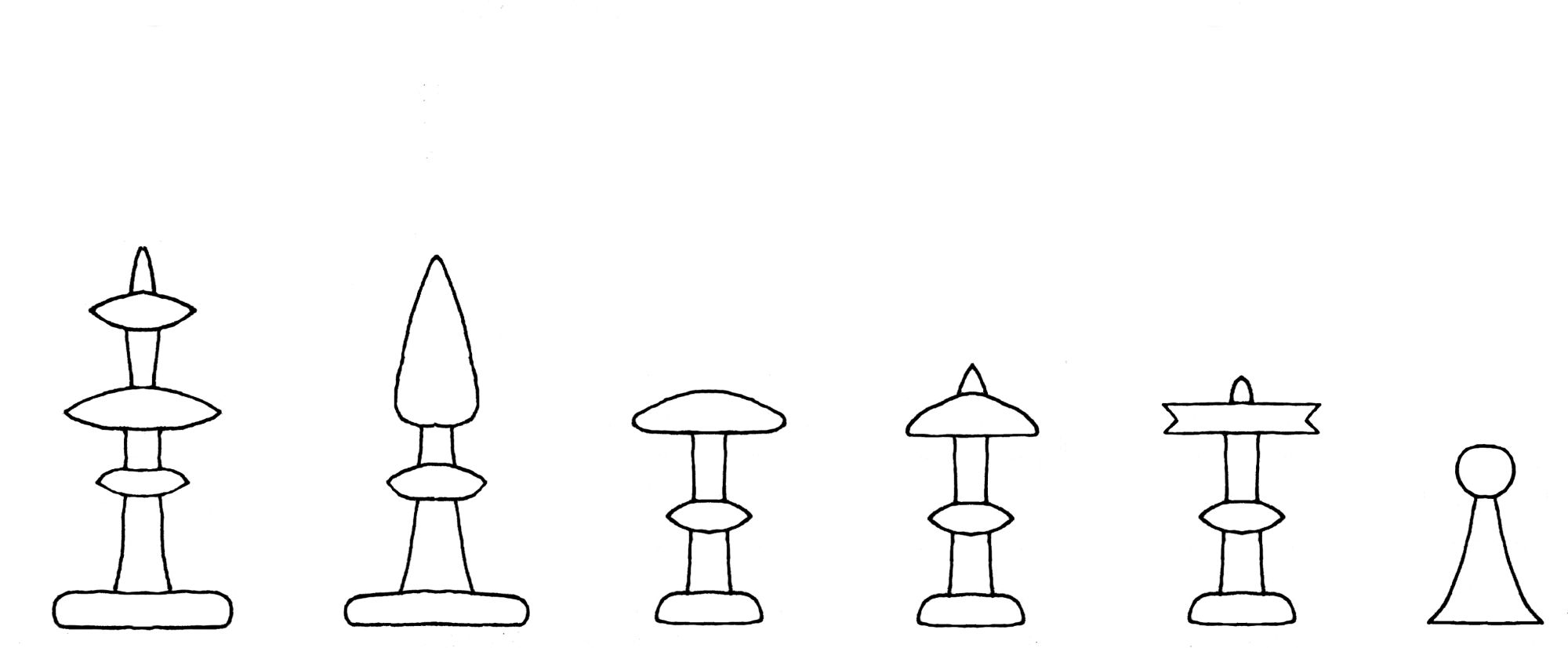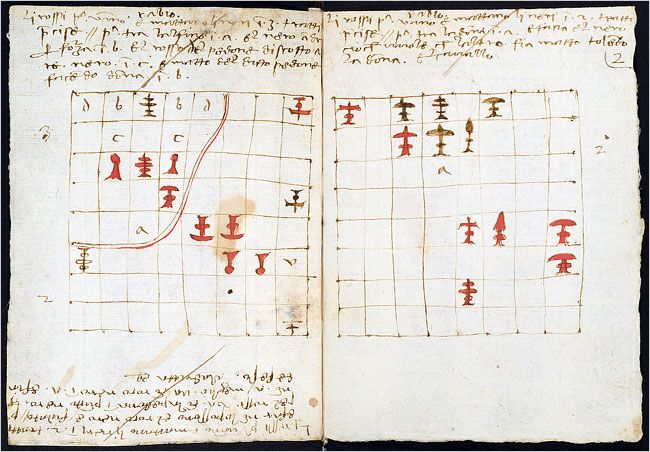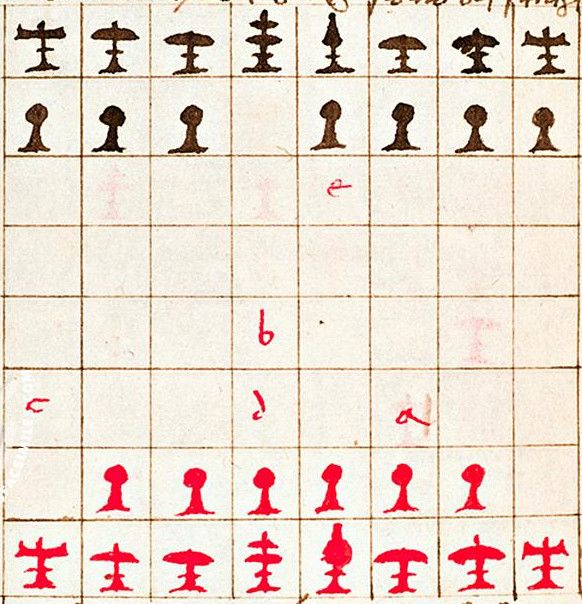The chess set of Fra Luca Bartolomeo de Pacioli, c. 1500
This chess set was illustrated in De ludo scachorum (On the Game of Chess), written around 1500 by Fra Luca Bartolomeo de Pacioli (1447 to 1517). Pacioli, who was both a Franciscan friar and a mathematician, was a leading authority on accounting. His book on chess is thought to have been partially illustrated and possibly also partly written by Leonardo da Vinci. It contains advanced chess problems and many illustrations. The chess boards in the illustrations are undifferentiated, and the pieces are black and red. The chess set has a more abstract feel to it than many others, but has some similarities to the set pictured in the Regnault de Montauban illustration of only a few years earlier. The king and queen also have similarities to those of the chess set illustrated by Damiano a few years later.
The king, queen, bishop, knight and rook are each made up of a pedestal (comprising a base, narrow column, and small elliptical disc) above which are signifiers of the individual pieces. The king is tallest, and has two tiers of elliptical discs above the pedestal; the lower is widest, with the upper smaller; and the column terminates in a small point above. The queen is slightly shorter and has a large conical point. The bishop, knight and rook are all the same height, and lower than the queen. Each terminates in a wide disc. In the bishop this has a flat base and a domed top. The knight is similar, but with a central point above the dome. The rook has a disc that is flat above and below, with a central point above this, and the disc has an incised notch around its rim. The pawn is a small cone with a ball on top.

The kings of the Pacioli set, alongside the kings and queens of the earlier Regnault set and those of the slightly later Damiano set (discussed next), might be seen as pointing the way towards the tiered sets of crowns first seen in the Albrecht and Anna painting, and then later in the Selenus manuscript.


